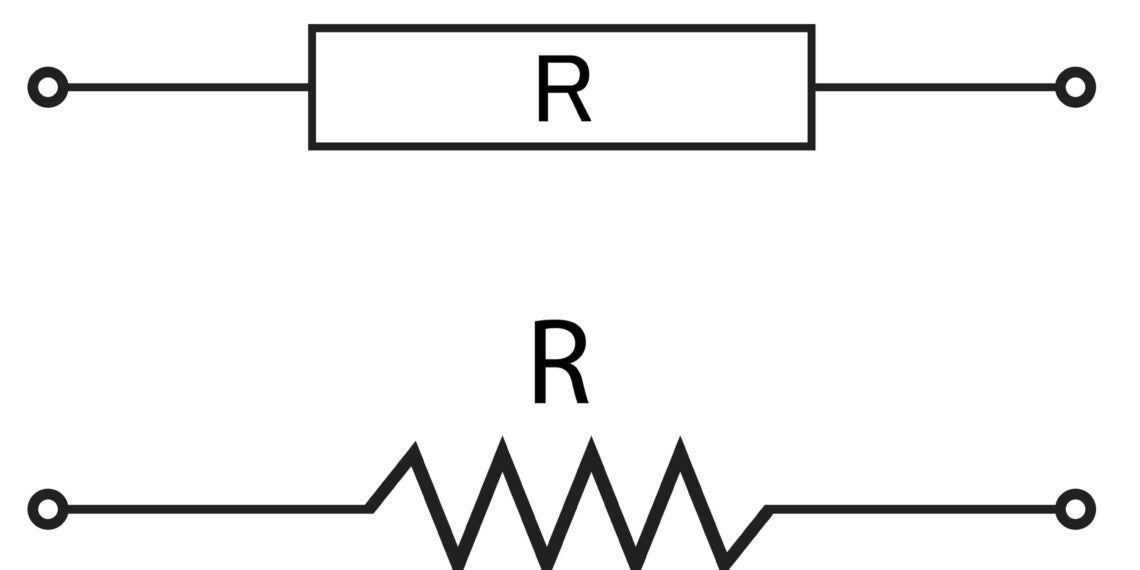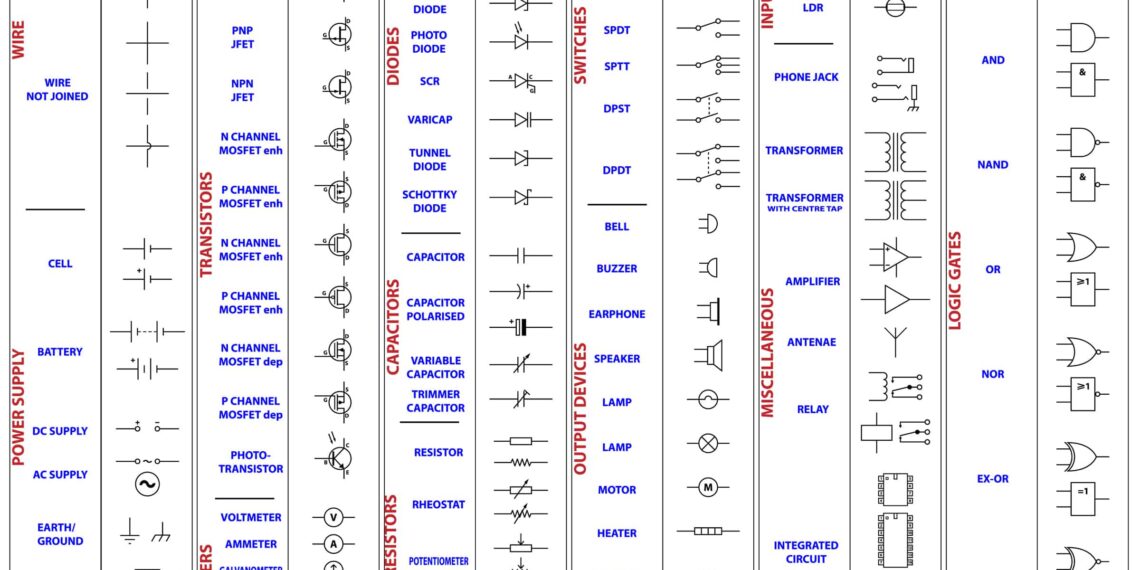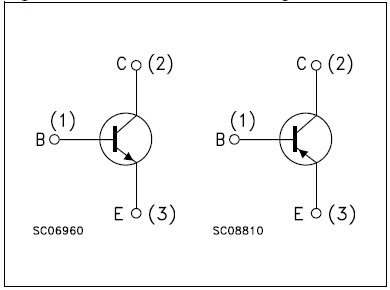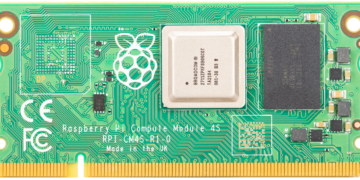
A basic electronic symbol
When designers don’t understand what components are being used and how they are interconnected, the PCBA development process can come crashing down around them. Therefore, a solid understanding of basic electronic symbols and their functions is essential for designers and engineers whose work dictates the success of the rest of the PCBA development process. In the table below are some of the basic types of electronic symbols that should be well-known and understood:

Common electronic symbols
Commonly Used Basic Electronic Symbols and Their Functions
When you hear the language used to describe the building of electronic circuits, boards, and systems, the reference is invariably to a software language—Basic, FORTRAN, C/C++/C#, Java, Ruby, HTML, XML, etc. Yet, there is also an electronics hardware language, which is utilized by professionals in all industries where electronic systems are a part of the system design. This language is electronic symbols.
Knowing electronic symbols and their functions within circuits and systems is important in understanding their operation and expected performance. In fact, the crucial stages of design and testing are only possible with this important knowledge. Let’s look deeper into the different symbol types and their functions:
Basic Electronic Symbols and Their Functions |
|
|
Wires |
Wires are the most basic electronic symbol representing a physical, electrical connection between two or more points.
|
|
Power Supplies |
Onboard power supplies are components represented by one of the symbols shown in the chart, such as a battery.
|
|
Transistors |
As a common active component, transistors are used for switching and amplification.
|
|
Meters |
Testing and verifying that an electronic circuit performs as intended is essential.
|
|
Diodes |
Single junction devices, employing P and N materials, are used primarily for switching and isolation.
|
|
Capacitors |
As one of the most common components found on a PCB, capacitors are basic energy storage devices.
|
|
Resistors |
The resistor is the most basic passive component in circuit design. Exemplifying Ohm’s Law, the device’s resistance is equal to the voltage across it divided by the current flowing through it.
|
|
Switches |
Switches are essential for electronic circuit operation, as they control when a system or subsystem is active or inactive.
|
|
Output Devices |
There are many output devices that may be used on circuit boards, and their functions vary according to need.
|
|
Input Devices |
Electronic signals exterior to the circuit board are typically referred to as an input device.
|
|
Miscellaneous Devices |
This category includes many common components and devices, such as transformers, op amps, and integrated circuits.
|
|
Logic Gates |
Logic gates are fundamental components of digital electronic circuit design.
|
How to Best Source Basic Electronic Symbols
Having a clear understanding of basic electronic symbols and their functions will aid you in designing and developing electronic boards and systems. With this knowledge, you can better source components and devices for your projects. However, if efficiency and accuracy are on your list of requirements, then opt for the largest online parts library that provides free footprints and symbols for your design, such as the TIP3055 and TIP2955 BJT equivalents shown below.

The TIP3055 and TIP2955 NPN and PNP BJT Equivalents
If you’re looking for data and information on basic electronic symbols and their functions, Ultra Librarian helps by compiling all your sourcing and CAD information in one place.
Working with Ultra Librarian sets up your team for success to ensure streamlined and error-free design, production, and sourcing. Register today for free.








